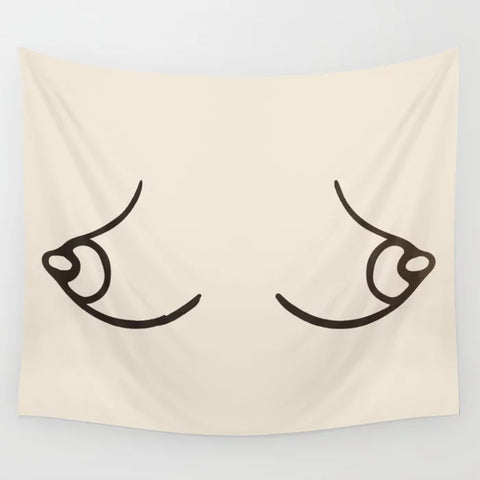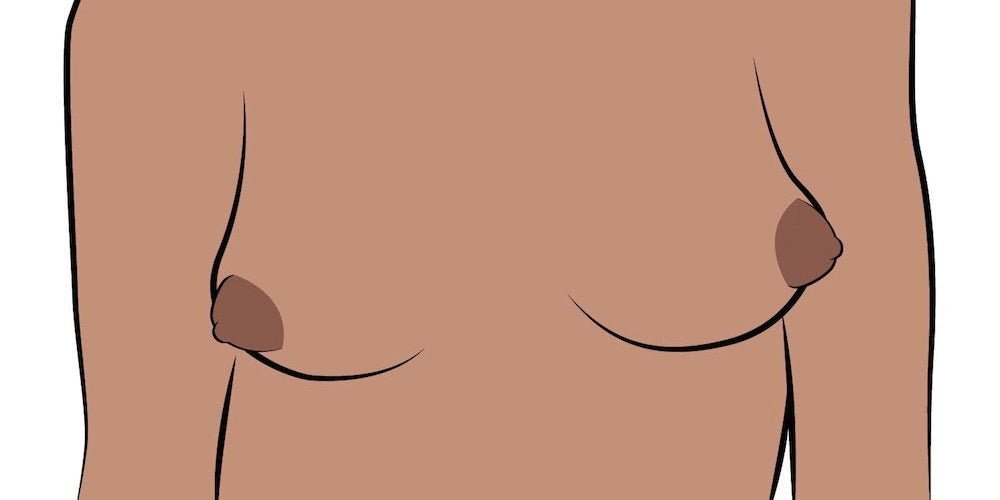Introduction
Body image concerns and insecurities can affect individuals of all genders. One specific concern that some people may experience is puffy nipples. Puffy nipples refer to a condition where the areolas, the darker areas surrounding the nipples, appear swollen or protrude more than usual. While puffy nipples are a relatively common occurrence, they can cause distress and self-consciousness for those who have them. In this blog post, we will delve into the causes, treatment options, and ways to promote self-acceptance for individuals with puffy nipples.

Causes of Puffy Nipples
Puffy nipples can have various causes. It's important to understand these causes in order to address the condition effectively.Hormonal changes
Hormonal imbalances, particularly during puberty, can lead to puffy nipples. Fluctuations in estrogen and testosterone levels can result in glandular tissue enlargement behind the areolas, causing them to appear swollen.Gynecomastia
Puffy nipples can also be a symptom of gynecomastia, a condition characterized by the enlargement of breast tissue in males. Gynecomastia can occur due to hormonal imbalances, obesity, certain medications, or underlying medical conditions.Weight gain
Weight gain or excess body fat can contribute to puffy nipples. As fat accumulates around the chest area, it can cause the areolas to appear more prominent.Genetics
Some individuals may have a genetic predisposition to puffy nipples. If family members have experienced the condition, it is more likely to occur in subsequent generations.Treatment Options
There are several treatment options available to address puffy nipples, depending on the underlying cause and individual preferences.Self-acceptance and body positivity
Developing a positive body image and embracing one's unique features can help alleviate distress related to puffy nipples. It's important to recognize that puffy nipples are a natural variation in the human body.Lifestyle changes
If puffy nipples are a result of weight gain, adopting a healthy lifestyle that includes regular exercise and a balanced diet can help reduce body fat and minimize their appearance.Consultation with a healthcare professional
If puffy nipples are a cause of concern, it is advisable to consult a healthcare professional, such as a general practitioner or an endocrinologist. They can evaluate the individual's hormonal levels, identify any underlying medical conditions, and recommend appropriate treatment options.Surgery
In cases where puffy nipples persist despite lifestyle changes and medical interventions, surgical options may be considered. Procedures like liposuction or glandular tissue excision can help reduce the prominence of puffy nipples and provide a more desired aesthetic appearance. It is crucial to consult with a qualified plastic surgeon to discuss the risks, benefits, and potential outcomes of these procedures.Promoting Self-Acceptance
Promoting self-acceptance is an essential aspect of addressing puffy nipples and improving overall well-being.Education and awareness
Understanding that puffy nipples are a common occurrence can help alleviate feelings of isolation. Engaging in research, reading personal experiences, and participating in support groups or online forums can provide reassurance and a sense of community.Positive self-talk and reframing
Practicing self-compassion and challenging negative thoughts about one's body can foster self-acceptance. Instead of focusing on perceived flaws, shift the focus to overall health, personal achievements, and qualities that make you unique.Seeking professional help
If concerns about body image significantly impact daily life or mental well-being, seeking guidance from a mental health professional can be beneficial. Therapists or counselors can provide tools and strategies to address body image issues and develop a healthier mindset.Bra Solutions for Puffy Nipples
Finding the right bra can provide comfort and support for individuals with puffy nipples. Here are some bra solutions to consider:1. Lightly Padded Bras
Lightly padded bras are an excellent option for individuals with puffy nipples. The thin padding helps create a smooth and even silhouette by providing an extra layer of coverage. It can help minimize the visibility of puffy nipples under clothing and enhance overall comfort. Look for bras with lightly padded cups that offer a natural shape without excessive bulk.
2. Molded Cup Bras
Molded cup bras are designed to provide shaping and support. The cups are pre-formed and have a structured shape that helps maintain a smooth and rounded silhouette. These bras are particularly beneficial for individuals with puffy nipples as they help distribute the breast tissue evenly and minimize any irregularities. Look for bras with seamless molded cups for a seamless look under clothing.
3. Contour Bras
Contour bras are similar to molded cup bras but offer a slightly different construction. They feature lightly padded cups with added shaping elements such as underwire or side boning. Contour bras provide a more defined shape and additional support while still offering a seamless appearance. These bras can be a great choice for individuals with puffy nipples who desire enhanced support and a smooth silhouette.
4. Bralette or Soft Cup Bras
Bralettes and soft cup bras are non-wired and have unstructured cups, making them comfortable options for individuals with puffy nipples. They typically offer light support and allow for natural movement. These bras are often made of soft and stretchy materials that adapt to the shape of the breasts. Look for bralettes or soft cup bras with a bit of lining or thicker fabric to provide modesty and some coverage.
When shopping for bras, it's important to consider factors such as size, band width, and strap design to ensure a proper fit and optimal comfort. Different brands may have variations in sizing, so it's recommended to refer to the specific size charts provided by the retailer or brand.
For a wide selection of bras suitable for individuals with puffy nipples, you can visit HauteFlair's Bra collection at the following URL: HauteFlair Bra Collection. They offer a variety of styles, sizes, and brands to cater to different body types and personal preferences.
Remember, finding the right bra is a personal journey, and it may take some trial and error to discover what works best for you. Consider trying different styles and sizes to find the bra that offers optimal comfort, support, and confidence.
Conclusion:
In conclusion, puffy nipples are a common concern for individuals, especially women, that can lead to self-consciousness and discomfort. However, there are various causes, treatment options, and bra solutions available to address this issue. Understanding the underlying causes, such as hormonal changes, gynecomastia, weight gain, or genetics, can help individuals better comprehend their condition and seek appropriate treatment if necessary.
Promoting self-acceptance and body positivity is crucial in navigating the journey towards embracing puffy nipples. Recognizing that puffy nipples are a natural variation in the human body and focusing on overall well-being and personal qualities can alleviate distress and improve self-confidence.
Lifestyle changes, such as adopting a healthy diet and exercise routine, can help reduce body fat and minimize the appearance of puffy nipples caused by weight gain. Consulting with healthcare professionals, such as general practitioners or endocrinologists, can provide further guidance and support in understanding hormonal imbalances and exploring treatment options.
In some cases, surgical interventions like liposuction or glandular tissue excision may be considered if lifestyle changes and medical interventions do not provide the desired results. It is important to consult with qualified plastic surgeons to discuss the risks, benefits, and potential outcomes of these procedures.
When it comes to bra solutions for puffy nipples, there are several options to consider. Lightly padded bras offer an extra layer of coverage, while molded cup bras provide shaping and support for a smooth silhouette. Contour bras with added shaping elements and bralettes or soft cup bras for a more natural and comfortable fit can also be suitable choices. Finding the right bra fit and style is essential, and HauteFlair's Bra collection offers a wide selection to cater to different body types and preferences.
Overall, it is important to remember that puffy nipples are a natural variation and not a flaw. Embracing self-acceptance, exploring treatment options if needed, and finding supportive and comfortable bras can contribute to a positive body image and improved well-being. By understanding and addressing puffy nipples, individuals can embrace their unique features and promote a sense of confidence and self-acceptance.

